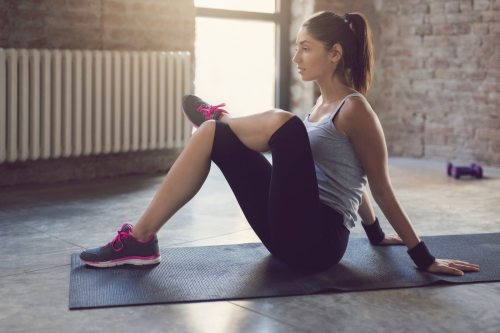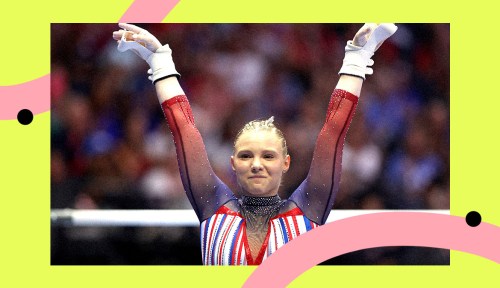When it comes to your fitness routine, recovery is the talk of the town. These days, giving your body TLC between workouts has become a whole industry, stacked everything you can dream of to get your muscles loose and feelin’ spry. That said, the tools and methods out there are all pretty different—so it can be confusing to navigate whether you should be stretching, foam rolling, or using a percussive therapy device to help melt away tension in your muscles.
Each method has its own specific benefit, and each one of them is generally good to turn to—if you stick with it. “Any method you choose, you have to be consistent. Recovery is not a one-and-done thing.” says Rand McClain, DO, osteopath, regenerative medicine expert, and founder of LCR Health. While consistency is key (as with anything in your workout), it comes with a caveat: Not much research has been done comparing the different recovery methods out there. “A lot of factors go into which method works best,” he says. “How often are you using this method, how consistent are you, how long are you using it for—things like that will determine its effectiveness.”
You can’t really go wrong when you’re recovering (though keep in mind that stretching cold muscles, for one, should be avoided). “There’s no bad answer to recovery and each of these modalities can effectively relax your body while helping repair your muscles,” says Emily Kiberd, DC, chiropractor and co-founder of Urban Wellness Clinic in New York City. “The most important thing you can do is actually pay attention to your body and take the steps to recover.” Keep scrolling for how stretching, foam rolling, and percussive therapy can help your body in different ways (and bonus points for using them all together to help achieve the recovery dreams are made of).
Stretching: for better mobility and flexibility
While everyone should obviously incorporate stretching into their routines, the recovery practice has gone through the ringer in terms of just when and how you should be doing it. Dr. Kiberd likens stretching to the “great egg debate” in nutrition: first it was good, then bad, and now there are certain caveats to pay attention to. Many pros will recommend dynamic stretching over static stretching to help warm the body, and static stretching alongside active stretching to help cool things down once the muscles have been utilized.
“Active stretching should include low intensity dynamic movements of the specific sport, along with primal movements—like crawling or rolling or squatting—to activate the muscles and the brain,” says Dr. Kiberd. Examples of dynamic movement include high knees, jogging, and body twisting, which all work to “create optimal muscle effectiveness.”
The special perk of stretching when compared to other recovery methods is that it involves your entire body. “Dynamic stretching provides optimal muscle recovery and overall wellness because of integration and awareness,” says Toni Melaas, Outer Reach method architect and partner. “Myofascial release through dynamic stretching achieves balance in the muscles surrounding aches and pains as well as releases specific tension.” And, she points out, you get the added benefit of increased flexibility.
When to do it: Because of what static stretching can do to muscles, Dr. McClain suggests doing it only after your workouts. “Stretching is generally good for any time except prior to any activity that is explosive or requires relative high intensity,” he says, adding out that studies have shown that stretching can temporarily slightly weaken the muscle. Dynamic stretching before a workout, though, is great to prepare your body for movement.
Foam rolling: for myofascial release
For the most beneficial myofascial release, or the use of pressure to get rid of muscle fascia tension, hit up your foam roller. “Foam rolling is a form of self-myofascial release, or self-massage that improves flexibility,” says Dr. Kiberd. Though she says that there are different theories on how it works on your muscles, a big one points to its use of constant pressure. According to her (and studies back this up), foam rolling causes such an intense sensation when it comes into contact with skin that you’re momentarily unable to feel pain happening within the muscle (though there is some discomfort, let me tell you). This chain of events allows the muscle to gain a greater, deeper stretch.
This is important because tightness can build within the body. “Tight, contracted muscles with a buildup of lactic acid are like landmines for the body,” says Dr. Kiberd. So not only do they hurt and take a while to recover, but they’ll make other parts of your body compensate for their stinted abilities. “If your hamstrings are tight from your workout and you’re not addressing the tightness with a foam roller or other methods like ice baths or leg compressing, then it can cause your core, glutes, or even your IT band to work harder, which inevitably can lead to more serious injuries,” she says.
When to do it: There’s no bad time to foam roll, say the pros. Dr. McClain says lighter foam rolling is a great warmup as it “moves blood and lymphatic fluid.” After a workout, Dr. Kiberd says foam rolling decreases soreness in a feels-so-good massage.
Percussive therapy: for blood flow and lymphatic drainage
The most modern recovery tool on the block (if you’re not counting how long it’s been used professionally or by athletes) is the percussive therapy device, which uses rapid vibrations to untie muscle soreness. “Percussive therapy is probably the best choice for quickly helping to break up minor adhesions [within your muscles] most simply and easily, and promotes blood and lymphatic fluid flow,” says Dr. McClain.
Compared to a foam roller, a Theragun or Hypervolt can give you more targeted muscle relief. “These devices are generally preferred if you have a specific area in the muscle that needs relief, because they deliver what I like to refer as ‘mini-chiropractic adjustments’ in the form of multiple high-velocity, low amplitude thrusts,” he says, noting that this results in reduced or alleviated tightness.
Percussive therapy is also the most chill method of the bunch, says Dr. Kiberd (you can take a Theragun to your leg while sitting on the couch, after all). “These therapies are good for relaxing and decreasing sympathetic response drivers,” she says, though points out that there hasn’t been much data to support increased benefits of percussive therapy yet.
When to do it: You’re good to use your Theragun or other percussive therapy device pre- or post-workout, says Dr. McClain.
Other useful stretching tips: Try stretching intervals to sneak ’em in, or the Mckenzie Method to help quash neck and back pain.
Sign Up for Our Daily Newsletter
Get all the latest in wellness, trends, food, fitness, beauty, and more delivered right to your inbox.
Got it, you've been added to our email list.











